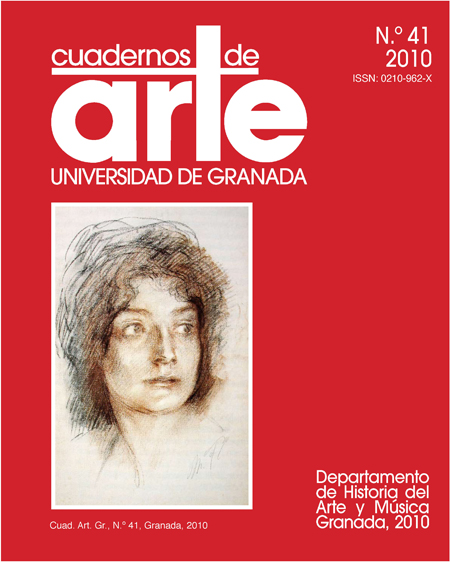The tabernacle of Granada cathedral: from Diego de Siloe to Navas Parejo
Keywords:
Tabernacles, Cathedrals, Architectural space, Religious architecture, Renaissance, Baroque, Neoclassical, Siloé, Diego de, Navas Parejo, José, Villanueva, Francisco, San Pedro de Galatino, Julio Quesada Cañaveral y Piédrola (Duke), Moscoso y PeraltaAbstract
One of the elements most frequently overlooked in studies on Granada cathedral is the tabernacle of the Main Chapel. The work designed by Diego de Siloe in 1561 represented an innovation within the ornate context of the presbytery. This ciborium formed a conclusive part of an iconographic and theological program full of symbolism. In the course of time it was replaced by others: after Siloe’s work we hear of another in 1648 in the form of «Ezequiel’s chariot», a further provisional one was done in 1804 before we finally come to the present tabernacle, created by Navas Parejo between 1924 and 1929.
Downloads
Downloads
Published
How to Cite
Issue
Section
License
Los autores que publican en esta revista están de acuerdo con los siguientes términos:- Los autores conservan los derechos de autor y garantizan a la revista el derecho de ser la primera publicación del trabajo al igual que ser licenciado bajo una licencia Creative Commons que permite a otros compartir el trabajo con un reconocimiento de la autoría del trabajo y la cita de la fuente original, con un uso no comercial y siempre que no se hagan obras derivadas.
- Los autores pueden establecer por separado acuerdos adicionales para la distribución no exclusiva de la versión de la obra publicada en la revista (por ejemplo, situarlo en un repositorio institucional o publicarlo en un libro), con un reconocimiento de su publicación inicial en esta revista.
- Se permite y se anima a los autores a difundir sus trabajos electrónicamente (por ejemplo, en repositorios institucionales o en su propio sitio web) antes y durante el proceso de envío, ya que puede dar lugar a intercambios productivos, así como a una citación más temprana y mayor de los trabajos publicados (Véase The Effect of Open Access) (en inglés).


 ISSN-e: 2445-4567
ISSN-e: 2445-4567








